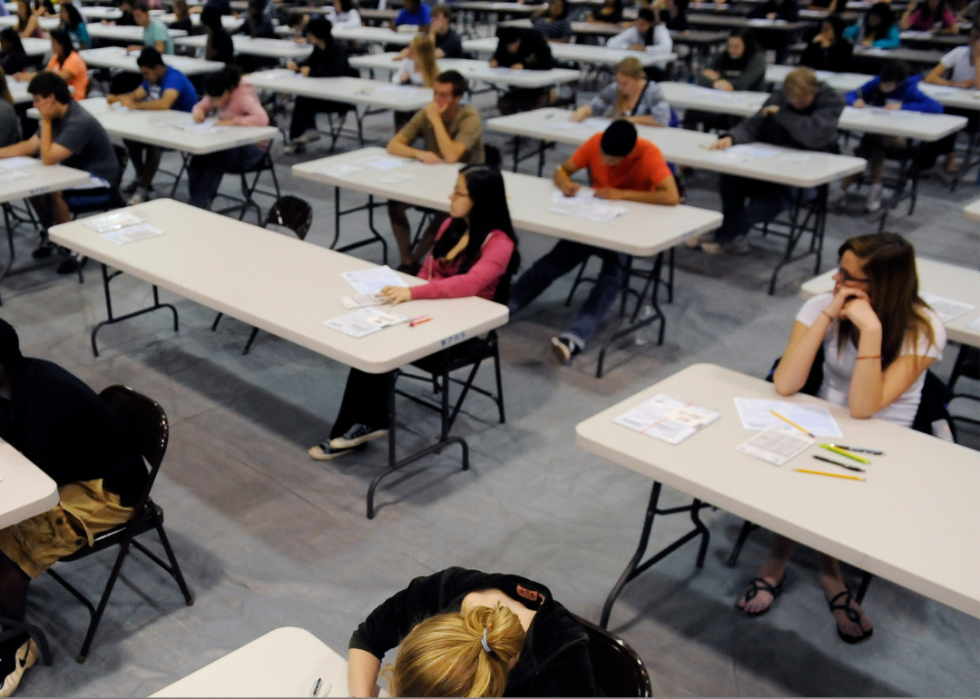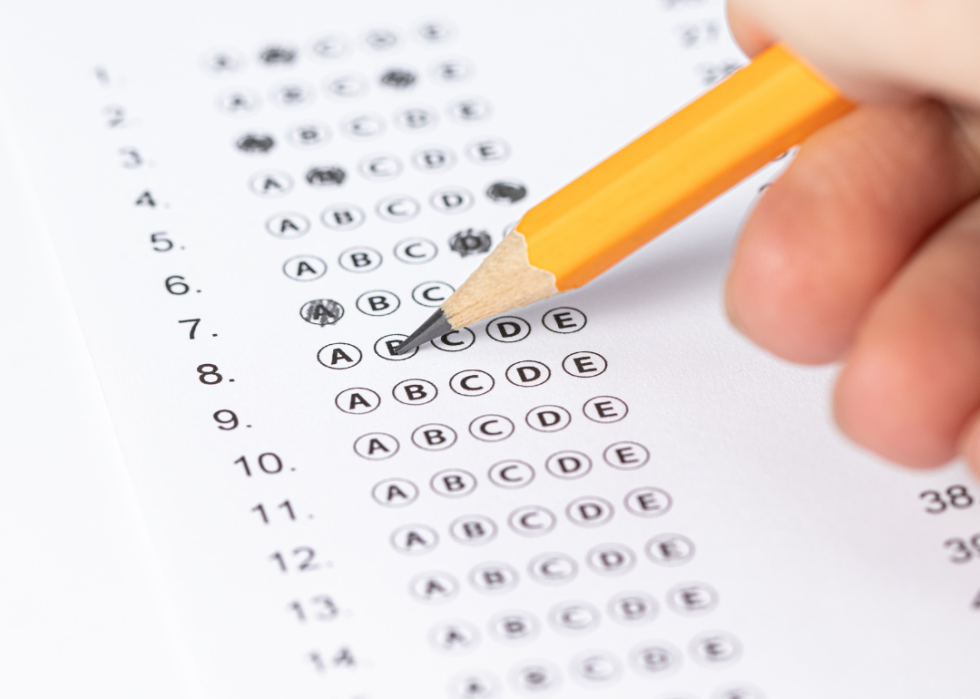
5 ways high school students can earn college credit
This story originally appeared on EDsmart and was produced and distributed in partnership with Stacker Studio.
5 ways high school students can earn college credit
With the rising cost of college education, gaining some college-level credits while still in high school is becoming ever more attractive for budget-conscious students.
EDsmart outlined five kinds of college credits high school students can earn before starting college.
The average cost of an undergraduate degree—including tuition, fees, and room and board—rose 169% between 1980 and 2020, according to the Georgetown University Center on Education and the Workforce. Tuition and fees, however, have stabilized since just before the coronavirus pandemic began.
To save on tuition, students can earn credits in a variety of ways—from Advanced Placement classes to summer school programs that allow high school students to take college-level courses. The number of high school students taking college courses for credit jumped 68% between the 2002-2003 and 2010-2011 school years, according to the National Center for Education Statistics. Nearly 70% of high schools by 2015 made dual enrollment classes available, according to the U.S. Government Accountability Office.
Which credits are accepted toward a college degree varies by institution, and how high you score on an examination will determine whether credits are accepted by some schools. Other schools might limit how many credits you can earn through a dual enrollment class, in which you earn high school and college credits at the same time. There is also the question of whether the credits will count toward requirements, and which ones.
Besides the cost savings, students who earn postsecondary education credits early may be able to take a semester off or have lighter course loads once they reach college or university.

Advanced Placement classes
Many universities and colleges will award college credit for students who score high enough on an AP exam. What that qualifying score is depends on the school.
High scores may allow some students to earn a spot in a more advanced class or skip an introductory class; some universities and colleges will allow high-scorers to to do both. Students can check the College Board website for policies at individual schools and for public schools in each state.

International Baccalaureate program
The International Baccalaureate program was registered in Switzerland in the 1960s on a recommendation from teachers affiliated with the International School of Geneva. The first official diploma program exams were taken by students at 12 schools across five continents in 1971.
Colleges and universities in the United States offer credit for the IB diploma and for individual classes. How much credit students can receive depends on their scores and individual schools. Some schools accept only the IB's higher level exams; others consider standard level exams as well.

Dual enrollment
Dual enrollment typically involves a partnership between a high school or school district and a community college or university. High school students are given the chance to take college-level classes and earn credit before graduating. Oftentimes, credit for a course counts at both levels.
Classes may be taught at a college campus, in a high school classroom by a visiting college professor, or by a high-school teacher teaching a college-level class. Students may also enroll in online instruction. How many credits a student can earn also varies.

College-Level Examination Program
The College-Level Examination Program allows students to gain credit for introductory-level college material by getting a passing score on an exam. Students can choose from among 34 exams. More than 2,900 colleges and universities in the U.S. participate in the CLEP program. The exams cost $93 plus the test center's administration fee. The exam topics range from history and literature to languages and sciences.

Summer school programs
Colleges and universities may offer summer programs to high school students for college credit. The pre-college programs focus on a variety of subjects, from software coding to climate change. They might emphasize a particular area of study such as STEM (science, technology, engineering, and math) or the performing arts. Some classes are part of the regular summer curriculum so the high school students will attend classes with undergraduates and complete college-level work. These programs also offer students the chance to experience life on a college campus.



